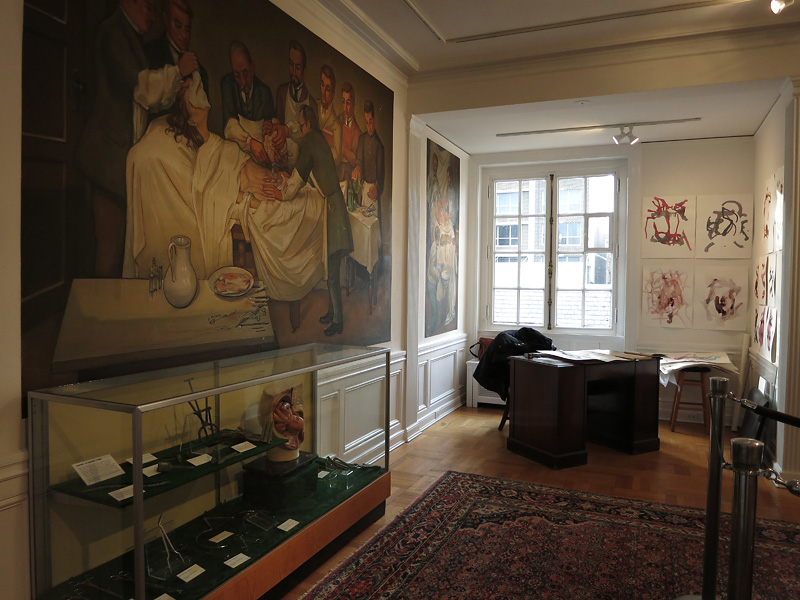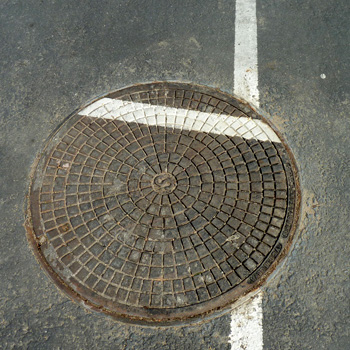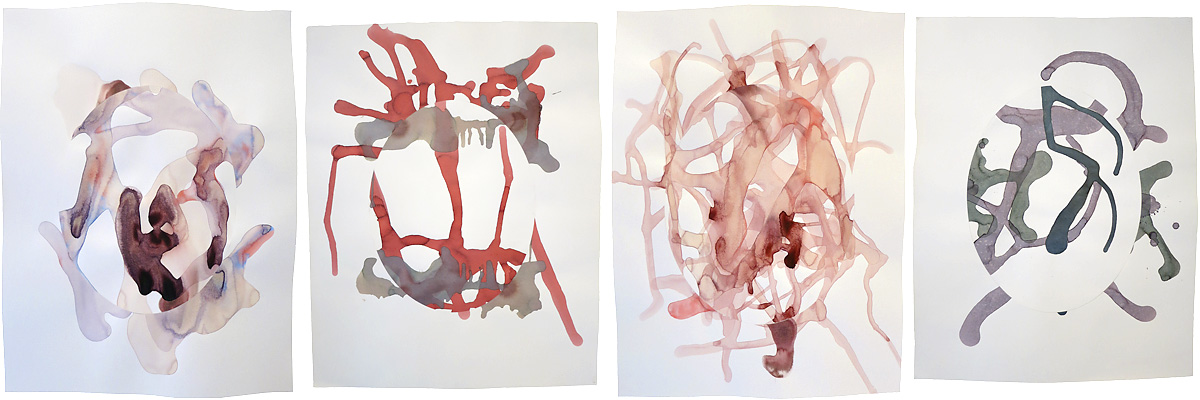
I went into this residency just as blindly as I did with all the other ones, without specific ideas of what to pursue and how to begin. I was offered extended time – at least six months, maybe more – to complete the work. It was an opportunity for thorough research to get to the bottom of my ideas without rushing. In this respect, the residency starkly contrasted with the recent project, Foreign Bodies, that I had just completed on a very tight deadline. This made the residency seem even more open-ended.

The lack of pressure was on the one hand liberating. On the other hand, I realized that I was completely overwhelmed; unlike other residencies, every nook and cranny of this museum, every single artifact, book, document, archive, even the building itself – all of it had the potential to lead me in a new direction. I had no idea how to begin. In a way, I felt paralyzed by the number of possibilities and by the fear that I might overlook the best course of action. At all the other residencies, I searched for clues, connections, or ideas that relate to the body: what does a farm, a desert, or an old chapel have to do with the human body? The answers were there, but not immediate. They needed to be unraveled. However, at this site, the unraveling seemed endless; everything either overtly addressed the body or the dismantling of it. To make matters worse (or even better, depending on how you look at it) I was granted access to every item in storage as well. The collection is available through a large searchable database… But of what use is it to me when I cannot decide what to search for??
When I find myself in this difficult position of not knowing where to start or what to do, I often recall a moment back in grad school when I felt completely inspirationless and, with regard to waiting for inspiration, one of my professors suggested to me that “waiting is an active thing.” So I went ahead and began with some casual observational sketching, just to keep busy practicing at least the craft of drawing and painting in order to avoid getting stuck in a holding pattern. I sketched a couple of modified skulls that were pulled out of storage; I painted the shadows of objects that were placed on a sheet of paper; I leafed through a book on medical aesthetics; I sketched some of the artifacts on display; I talked with the curator about various possibilities and expectations; I talked with an anthropologist with whom I had collaborated in the past; I wrote down ideas for potential ways to start some visual experiments… This lasted for a few weeks.

After much pondering, writing, and reading, I realized that I just needed to calm down and think about the very bottom line, the main question of this residency: as an artist, what could I offer to the museum visitor? What could I bring to the table that a scientist, surgeon, doctor, anthropologist, or historian could not? Since this is a cultural institution, not an operating room, I felt that my presence as an artist wouldn’t be inconsequential to the public perception of surgery. I started with this broader question, and my answer was essentially something that I ended up articulating in my most recent artist’s statement.

This thought experiment helped me refine some of my long-standing ideas. At the same time, the series that I worked on just prior to this project clearly influenced the specific direction that I was about to go in. I realized that I am interested in subjectivity, lived life, and basically the opposite of alienation – that is, a sort of intimacy or understanding of the human body as a person, not a thing. I also realized that for the sake of lucidity, I could present my ideas from a more invented, imaginary, or poetic approach than a scientist or historian could, at least within the parameters of their respective fields. I was ready to start working out the details. I woke up the following morning with several ideas that I audio-recorded while driving, for fear of them vanishing before I had a chance to get back to the studio.
Ultimately, I decided to investigate the body/non-body threshold. A limb sometimes feels like it’s not part of the body. A pacemaker, or a musical instrument, or a car sometimes feels like it is part of the body. When does something infiltrate one’s life so much that it seeps into the bodily experience of daily existence?

To begin, I considered placing a layer of translucent Yupo on top of opaque paper to resemble skin. I tried several approaches to the idea of cutting through the Yupo and removing parts of the drawing, but none of my experiments were satisfying. In the meantime, while browsing through some social media posts, I came across a blog that featured badly re-positioned manhole covers. Oddly enough, these images resonated with me more than anything else I had recently come across. I’m not even entirely sure why; it probably had something to do with the ambiguous threshold idea that was already on my mind. I began drawing circles and ovals directly on top of my inkblots. The oval shape resonated with me even more so than the circle. Ellipses had a Victorian-era feel that was in tune with the atmosphere I was experiencing at the museum. I also remembered the vertical oval frames that were popular almost exclusively for portraits throughout the 19th and early 20th Century. Hence, if I were to draw anything that is presented within the shape of an oval, it would have the visual implication of a portrait, not just an object.

This is when the (oval-drawing) fun began. I knew about the old method of drawing ellipses with two pins and a string. After rigging some foam-core board as a base and a rubber band at the tip of the pencil to prevent the string from slipping, this method worked quite well, albeit clumsily. Since I was going to be drawing so many of these, I wanted to employ something more graceful and precise. The curatorial assistant, Peter Rosen, helped me search for an inexpensive ellipsograph. To our surprise, unlike the common compass, every ellipsograph we could find was either an antique or vintage object auctioned off as a costly collectible, not as a practical tool. In the end, I bought an oval mat-cutter, which enabled me to cut an ellipse quite accurately and then rotate it 180º before reattaching – much like the manhole covers from the aforementioned article.

During all of this, I read a book by Annemarie Mol titled The Body Multiple, which provided additional inspiration. She described ways in which various parts of life can be viewed as different versions of the body, not figuratively but literally. I’ve been thinking about this sort of thing ever since my first residency in Santa Fe, when I began including various plants, landscape formations, and architectural structures in my anatomical drawings.
With all of this information on hand, I made around 30 oval-cutout-rotations before beginning research for my first piece, which I will write about soon.
Hello,
I am making a poster for circulation within my university for educational and non-profit purposes. I would dearly like to use your 4 images of painted sketches of the heart. Would this be possible, and how should I acknowledge the image?
All the Best
Kate Fayer-Kerr
Research Fellow, Anthropology Department, University of Oxford
Vesna, thank you for all the time you spent with me today at the museum. I so enjoyed discussing your art, viewing your sketchbook, and hearing about the various influence in your life to date. I see here that you are also an artist with words! Thank you for opening my eyes and my heart to experience the world in a new and different way!
Vesna! This residency at the museum and the new sketches/ovals look great! I was so excited to see it.
I appreciate being able to share the numerous facets within your work. Look forward to seeing More!